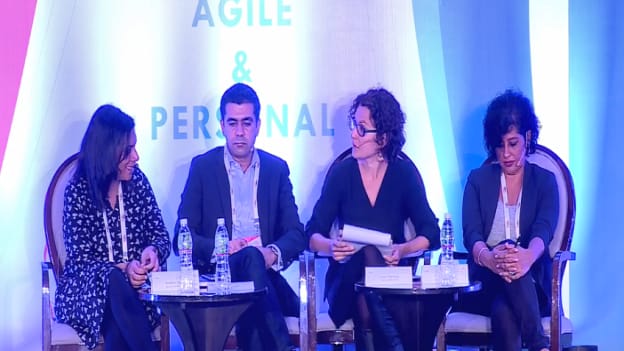New Reward Paradigm for Working Parents

The Total Rewards and Wellness Conclave 2018 kicked off on 12th January in Mumbai amongst a huge gathering of industry stalwarts. One of the panel discussion was tailored to the new emerging employee segment i.e. ‘the working parents.’ The discussion was graced by Gaurav Bal – Compensation & Benefit Leader - GE South Asia, Mallika Ghosh – Executive Director at Parinaam Foundation - Ujjivan Financial Services, Priya Krishnan, CEO at KLAY Schools and anchored by none other than Ester Martinez, CEO & Editor-in-chief of People Matters. The session revolved around on how the most progressive organizations are trying to evolve and adapt to their reward strategies to cater to this new segment.
Priya rightly points out that in the urban city it has become a necessity more than a choice for both parents to work. At Klay Schools, out of 6000 kids whom they manage, 76% are a single child. Majority of the working mom’s try their best to delay the process of having kids due to the tussle between their biological clock vs. the career clock. And the lesser known fact is that close to 80% updates come from Fathers’ when they deal with the kids at KLAY. In essence, it’s not only about gender but holistically creating a family-friendly workplace with reduced worries of basic parenting needs. Given this situation, let us look at some of the necessary roles that organizations will have to play when it comes to catering to this emerging new segment of working parents.
What role will this new segment play in future of work?
Let’s look at some data points to check how important this new segment is for organizations. At GE alone, 40% of workforce population falls under this new segment of working parents. And this is across all brands, businesses, and geographies in the company. Setting this context, Gaurav rightly points out that there are three crucial aspects governing such data points which can be summed up as:
• A large part of the population comes from tier A and tier B cities which are double income group.
• A large proportion of this population falls under the middle-level management segment.
• The productivity ratio, absenteeism rate, and other factors play a greater role when it comes to managing and retaining this talent pool of working parents.
All these three aspects become pertinent and critical as the internal research suggests that this 40% will become 65% by 2021.
Organizations preparedness to retain this new segment
Organizations are trying hard to create wellbeing programs for working parents. Flexibility in hours of working, framing part-time policies for returning mothers, offering counseling supports to the working parents, increasing paternity leaves, establishing offsite/onsite creche and many more diverse ways of initiatives are taken up by organizations of every shape and size. However, it can never be one program alone which can fetch the required result, but a combination of consistent efforts from both parties which can help solve this complex issue of retaining the working parent's segment.
Mallika shared a realistic picture from her own life during her transition from the advertising world to the new role of an Executive Director of Parinaam Foundation. The inner turmoil of what is right for a mother to do – the choice between her career and motherhood had shaken her up as well. Such phase comes in the life of the majority of people; however, it’s about finding the solution which creates the difference. And Mallika was able to balance the two when they finally decided to open a small crèche in their office for all staffs undergoing the same challenge. It’s about organization’s proactive approach to deal with such situation, which will help in retaining a significant number of such employees.
How do you build in buy-in from the top to develop a new paradigm of rewards?
When data points suggest that 40%-50% of the working population in an organization falls under the working parent clan, getting buy-in is not as challenging as it looks to be from the periphery. One can take the help of research, surveys, data, and analytics when it comes to linking the productivity and absenteeism ratio with parenting problems. Keep peeling the raw data into the right form to get what is holistically good for the wellbeing of the organization as well as the working parent community.
Wrap Up
Urban parenting is a lonely journey. Finding the actual pain point, as opposed to the perceived ones, is what leads to effective solutions. The obvious result will be a better-trusted relationship between the employee and the organization. Also, there cannot be one program or policy which will be super effective in supporting and motivating working parent employees. It’s about multiple efforts on an ongoing basis to find a strategy of a flexible approach that works, in the context of working parent community.











